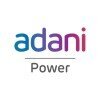Filter interviews by
XL Energy Interview Questions and Answers
Be the first one to contribute and help others!
Interview questions from similar companies

Interview Questionnaire
1 Question
- Q1. Normal question about personality and job related
Interview Preparation Tips
Experience: Interview was going smoothly & all questions was related my job so it's was easy for me.
Tips: Good knowledge about of wind turbine
Duration: 2 hours
Total Questions: 25
Round: HR Interview
Experience: Interview was completed so easy
Tips: Required nice personality and confidence is must required

I was interviewed before Nov 2016.
Interview Questionnaire
3 Questions
- Q1. About yourself
- Q2. Will you work at any location
- Ans.
Yes, I am willing to work at any location for the Senior Engineer position.
I am open to relocating for the right opportunity
I have experience working in different locations
I am flexible and adaptable to new environments
- Q3. Why you think you can work in any adverse situation
- Ans.
I have a proven track record of staying calm and focused in challenging situations, allowing me to problem-solve effectively.
I have experience working in high-pressure environments and have successfully delivered projects on time despite obstacles.
I am adaptable and can quickly assess a situation to determine the best course of action.
I have strong problem-solving skills and can think creatively to find solutions in ad
Interview Preparation Tips
Duration: 1 hour
Total Questions: 100
Round: Group Discussion
Duration: 20 minutes

I applied via Referral and was interviewed before Mar 2020. There were 3 interview rounds.
Interview Questionnaire
2 Questions
- Q1. Method Overloading and Method Overriding
- Q2. Excel Presentation
Interview Preparation Tips

I applied via Naukri.com and was interviewed before Jan 2021. There were 4 interview rounds.

(1 Question)
- Q1. Related questions my job
Manager related
Interview Preparation Tips

I applied via Recruitment Consultant and was interviewed before May 2020. There were 3 interview rounds.
Interview Questionnaire
1 Question
- Q1. Position & JD
Interview Preparation Tips

I applied via Company Website and was interviewed before Jan 2021. There were 3 interview rounds.
Interview Questionnaire
1 Question
- Q1. Related to distribution network, safety and Quality of work related.
Interview Preparation Tips

I applied via Naukri.com and was interviewed before Nov 2021. There were 4 interview rounds.

(1 Question)
- Q1. Experience related questions Materials selection, material properties Types of hardwares, bolted joints types
(1 Question)
- Q1. Model test on Autodesk Inventor
(1 Question)
- Q1. CTC Related discussion
Interview Preparation Tips

(2 Questions)
- Q1. Introduction to yourself
- Ans.
I am a recent graduate with a degree in Computer Science and a passion for coding and problem-solving.
Recent graduate with a degree in Computer Science
Passionate about coding and problem-solving
Experience with programming languages such as Java, Python, and C++
- Q2. Why wanted to join this company
- Ans.
I am passionate about the company's mission and values, and I believe my skills align well with the opportunities here.
I admire the company's commitment to innovation and sustainability.
I am impressed by the company's track record of success and growth.
I have heard great things about the company culture and employee development programs.

I applied via Campus Placement and was interviewed in Sep 2022. There were 2 interview rounds.

(2 Questions)
- Q1. Puzzles were asked and one coding question was asked.
- Q2. Coding question was based on prime numbers.
Interview Preparation Tips

I was interviewed before Sep 2022.

Detailed test with lots of questions
(1 Question)
- Q1. Lots of technical questions
Interview Preparation Tips
Tell us how to improve this page.
Interview Questions for Popular Designations
Interview Questions from Similar Companies

Suzlon Group

Adani Power

Adani Group

Torrent Power
- Home >
- Interviews >
- XL Energy Interview Questions









